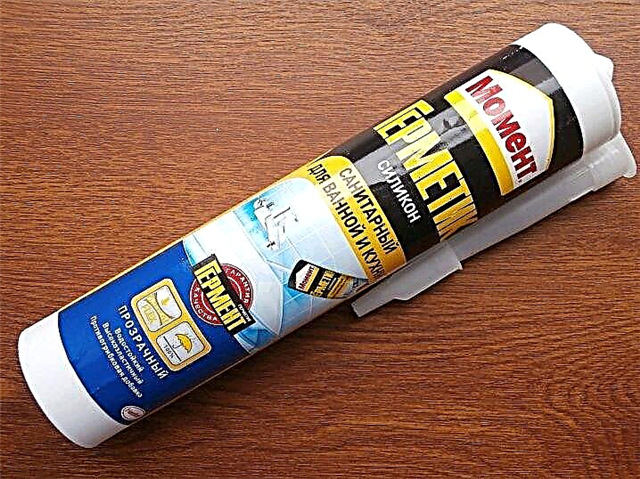
 All paints and varnishes are usually divided into basic, intermediate and others. Representatives of the intermediate category are diluents and solvents. Solvents are usually used at different stages of the paint industry. For example, they serve in the paint and varnish industry and are necessary as a viscosity regulator.
All paints and varnishes are usually divided into basic, intermediate and others. Representatives of the intermediate category are diluents and solvents. Solvents are usually used at different stages of the paint industry. For example, they serve in the paint and varnish industry and are necessary as a viscosity regulator.
The definition of these substances is as follows: solvents are low molecular weight volatile liquids with low boiling points. They are strong and weak: the former are characterized by the fact that with them the given polymer forms a single system in any concentration range and a wide temperature range.
High-quality solvents of paints and varnishes have the following qualities: inertness (they do not react with paints and varnishes), volatility (for complete evaporation during the drying of the paint layer).
According to the degree of activity, the solvents are divided into three groups:
- turpentine,
- ethyl acetate
- acetone,
- amyl acetate
- dichloroethane
- White Spirit,
- technical coal solvent.
They are pure organic matter, used to dissolve films or to prepare various mixtures.
Turpentine
Colorless, often transparent, sometimes with a reddish or dark red tint, a liquid that is commonly used in diluting paints and accelerating the drying of paintwork. Turpentine is mainly used to dilute oil paints. If you choose between peeled and unrefined turpentine, then for painting surfaces it is worth paying attention to peeled turpentine.
Turpentine is flammable. Wood (untreated) turpentine is obtained by dry distillation of wood, gum turpentine - by distillation of softwood resin. The first must undergo additional processing, due to which coloring components contained in wood turpentine will disappear from the solvent.
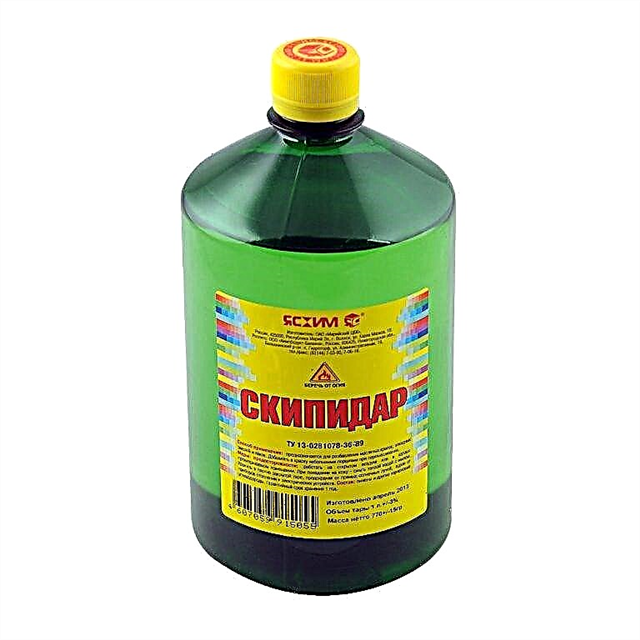 To understand whether you are satisfied with the quality of turpentine, it is necessary to mix in equal proportions linseed oil and turpentine to the surface. If a strong film remains on the paintwork after a day, the quality of the solvent is certain.
To understand whether you are satisfied with the quality of turpentine, it is necessary to mix in equal proportions linseed oil and turpentine to the surface. If a strong film remains on the paintwork after a day, the quality of the solvent is certain.
Gum turpentine, or, as it is also called, turpentine oil, is more environmentally friendly than wood oil: it is distinguished by a calmer smell and lightness.
Turpentine is also used for degreasing coatings, despite the high cost of this solvent, which is justified by the high quality of the working material.
Acetone, Amyl Acetate, Ethyl Acetate
Solvents used with nitro paints. Since these substances are easily mixed with water, it is necessary to ensure that it does not get into them: this can cause whitening of a transparent film. If solvents of butyl alcohol are added to the composition of these substances, then the gloss of the varnish film will significantly improve.
Solvent
Technical coal-tar is a mixture of aromatic hydrocarbons, which are obtained in the coke-chemical industry during the rectification of refined fractions of crude benzene. Physical characteristics of the solvent: it is a clear, colorless liquid, it is available in three grades - A, B, C, which differ in the following parameters: boiling point, density, small fluctuations in the content of such chemicals as sulfur and phenols.
The solvent is a high-quality solvent for paints, but due to its toxicity, the solvent is not so popular, unlike turpentine. The solvent is used only for the cultivation of pentaphthalic and glyphthalic paints.
Dichloroethane
The next solvent to be mentioned. This colorless, slightly flammable liquid with a chloroform odor also tends to turn yellow due to exposure to sunlight. Precautions when using this diluent: a mandatory condition when working with this substance is the use of rubber gloves, since the diluent due to the specific chemical composition can significantly affect the skin of your hands.
Siccatives
These are special additives that enhance the decorative effect, as well as the water resistance of the finished dye composition. In addition, they can significantly reduce the amount of time required for the drying of oil paints, varnishes, varnish, as well as oils. However, these additives have a rather serious drawback: when using them, the paintwork becomes extremely fragile, and therefore it is recommended, if possible, to do without their use when processing the surface.
Ideal solvents for certain types of resins are substances such as gasoline and kerosene. They are also used in washing hands stained with paint, as well as when cleaning work tools.
Characteristics of solvent 646
Among the masters of solvents, solvent 646 (P-646) is most famous.
It was first made in the 20th century. At first it was used to dilute nitro-varnishes, nitro enamels, its versatility was discovered much later, and it began to be used in diluting paints and varnishes to working viscosity, in the cleaning procedure for painting equipment and working tools. Many of the components that make up this solvent play a significant role in the ability to dissolve most organic substances.
Solvent 646 is a colorless / slightly yellowish liquid with a specific odor. The percentage of the following substances is included in its composition: toluene (50%), ethanol (15%), butyl acetate (10%), butanol (10%), ethyl cellosolve (8%), acetone (7%).
Solvent 646 is a sufficiently strong solvent, therefore, when using it as a working substance, safety measures must be observed and be extremely careful when using it.
After drying, the paintwork acquires an additional shine.
Solvent 649 is used to dissolve nitrocellulose-glyphthalic film former.
The choice of diluent depends on the working situation, the main parameters for determining the type of paint and varnish material and the ambient temperature during application of the material.
What it is?
A great example is the use of a solvent for diluting thick paint. When volatile fractions evaporate from it, it becomes more viscous. For its further use, it is necessary to reduce its density. This will help exactly the solvent.
There is no universal type solvent in naturewhich can be used to dissolve any material. It is necessary to select the option that will help to cope with the goal.


To create agents capable of dissolving several different substances, manufacturers create multicomponent formulations. They include several single-component options at the same time. They differ in technical characteristics.
The tool P 4, which is manufactured according to GOST 7827-74, includes volatile organic solvents in its composition:
- 62% are hydrocarbons (toluene),
- 26% ketones (acetone),
- 12% esters (butyl acetate).


Thinner R-4 is an excellent choice for the cultivation of paints, enamels and primers, as well as putties. Mixed means are characterized by versatility, as they are designed to fulfill several goals.
The main task of R-4 is to dilute to the desired consistency of paints and varnishes for further staining.


Main tasks:
- Do not interact with the material, and also evaporate quickly after application to the product,
- be non-hygroscopic, i.e. keep all properties in contact with water,
- solvent should be poured into the paint a little so that they mix easily, resulting in a homogeneous mixture.
Thinners cannot independently dissolve the desired polymer, but its structure is not disturbed. In reality, most buyers prefer solvent mixtures, which are called numbered based on their labeling.
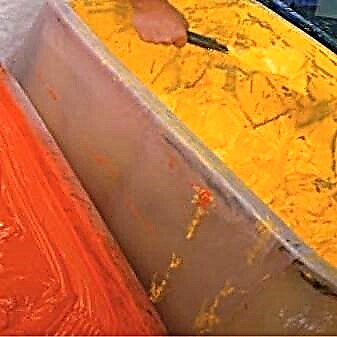

For example, the R-4 solvent containing toluene and acetone is the optimal solution for working with alkyd paints or varnishes. To dilute water, ordinary water can be used. But in order to slightly lower the viscosity of the paint, you should pour in a little water and wait for complete dissolution.
Features
All solvents can be divided into inorganic and organic, based on their origin.
The first group is not in demand, because it includes substances that consist of a liquid ammonia solution, solutions of salts of phosphoric acid, amines and water. Inorganic diluents have a characteristic unpleasant odor.
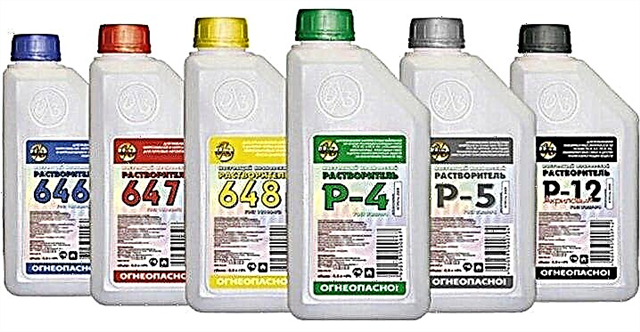
The second group is based on the physical properties of solvents:
- Volatile - solvent, white alcohol, gasoline. They are used to dilute acrylic and oil materials and enamels. Many representatives of this group quickly ignite, so you should be very careful when interacting with them. It should be located away from fire, and also not to use them in rooms with high air temperature.
- Medium volatile - A striking example is kerosene. It is used to dilute oil and acrylic paints.
- Hard volatile - turpentine belongs to this group. Its purpose is to dilute oil paint, varnish or enamel.


Organic solvents have both advantages and disadvantages. The main plus is that they are used as a diluent for various substances. If we talk about the cons, it is worth noting that they retain a rather unpleasant odor for a long time and are characterized by toxic fumes, which are easily ignited, and can also cause serious poisoning by fumes.
It is impossible to name the strongest solvent, since each species is designed to dissolve or dilute a particular agent.
To clearly understand which solvent is suitable for a particular paint, you need to familiarize yourself with their description and the table of compliance. It will help to understand the difference between different varieties.
Solvent
Type of paintwork
Homogeneous solvents
Solvent (more precisely thinner) of acrylic paint, water-based paint and other water-dispersible paints and nibble
Gasoline (gas galosh, nefras)
Thinner for oil and bitumen paints, varnishes, enamels
Solvent of oil and alkyd-styrene paints
Solvent of oil and alkyd paints and enamels (including PF-115, PF-133, PF-266), bitumen mastics, varnish GF-166, primer GF-021
Solvent of glyphthalic and bituminous varnishes and paints (including melamine alkyd).
Solvent of glyptal and bitumen varnishes and paints, epoxy.
Perchlorovinyl paint thinner
Combined (numbered) solvents
Universal solvent for nitro-paints, nitro enamels, general-purpose nitro-varnishes, also epoxy, acrylic, solvent
Thinner for nitroenamels, nitro coatings for cars
Thinner NTs-132k, GF-570Rk
Thinner of auto enamels NTs-11, GF-570Rk
Polyacrylate, perchlorovinyl, LKM with copolymers of vinyl chloride with vinylidene chloride or vinyl acetate
Perchlorovinyl, polyacrylate, epoxy
Melamine formaldehyde, rubber, polyvinyl butyral
VL-51 varnish thinning
Isocene Hardened Epoxy Enamels
Polyurethane varnish thinner
Polyester resin solvent
Solvent of polyurethane paints and enamels
What are the types?
Modern solvent manufacturers offer a wide variety of organic and inorganic options that can be used for various purposes. A large assortment enables the buyer to choose the best option depending on the goals. For example, there is a wax solvent for depilation, which consists of esters of fatty acids. It is safe for the epidermis, perfectly eliminates wax residues and its stickiness.

Organic solvents are in great demand, which can be divided into several large groups:
- alcohol-based products
- hydrocarbon substances
- ester types.


The first group, which includes alcohol-based products, includes:
- Ethyl alcohol has a specific odor. It easily ignites at high air temperatures.
- Butyl alcohol is often used to work with nitrocellulose paints.
- Methanol is presented as a clear, odorless liquid. It easily comes into contact with water, creating a homogeneous mixture. Methanol is used for diluting paints. Its main drawback is its high toxicity.
- Ethylene glycol is an odorless, viscous texture. It is often used to dilute nitro-lacquer substances, after which the gloss and smoothness of the paint are improved.
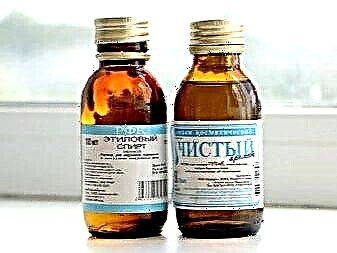


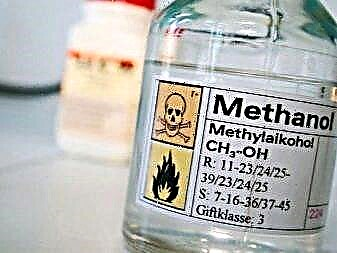
Bright representatives of hydrocarbon products are:
- "White Spirit" - A very popular and popular oil refinery. It is designed to dissolve certain types of resins, nitro-paints and oil paints. It attracts attention with harmlessness and reasonable cost. It is often used for domestic purposes, for example, to eliminate fat from various kitchen items.
- Petroleum benzene characterized by a strong odor, is water-insoluble, but interacts well with carbon compounds. When working with it, you should adhere to safety measures, since it emits harmful fumes.
- Turpentine often used for dilution of oil paints or putties. It is a colorless transparent liquid, which sometimes has a reddish tint, is highly flammable. Better to choose a cleaned option.


The third group includes such substances:
- Methyl acetate solvents are characterized by mobility and toxicity. They boil easily and also evaporate quickly.
- Ethyl acetate products have a pleasant smell, slow boiling and rapid evaporation.
- Butyl acetate substances have a characteristic yellowish tint. They evaporate for a very long time, for this reason they are used to increase the drying time of varnish or paint.

- Amyl acetates have much in common with butyl acetate diluents. They are distinguished by a pungent odor and prolonged evaporation.
- Acetone is flammable, has a very unpleasant, pungent odor and is characterized by increased volatility.
- A mixture of solvents is used to dilute nitro-lacquers. It consists of esters. The composition of the solvents affects the surface to be painted. For example, rapidly evaporating diluents add turbidity to the resulting coating. If the solvent is characterized by long-term evaporation, then the coating will turn out beautiful, glossy and smooth.

In order not to get confused in a wide variety of solvents, manufacturers began to apply numbering:
- P-4 is one of the most famous diluents. It is intended for the dilution of alkyd paints and emulsions incorporating a chlorinated polymer. It interacts well with the paint, as a result of staining, a durable film is formed. It is also used as a degreaser, it is flammable and highly volatile.
- R-6 is designed specifically for the dilution of organosilicon and water-diluted paint materials.It consists of benzene (40%), butyl acetate (15%), butyl alcohol (15%) and ethyl alcohol (30%).
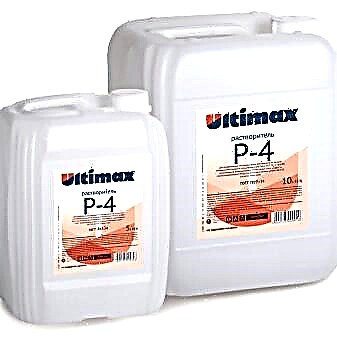

- 646 is a universal technical solvent, which is often used for various industrial and domestic purposes. It is characterized by the properties of a degreaser, as well as multifunctionality. It has a characteristic yellowish tint, an unpleasant and pungent odor and is rapidly evaporated. It consists of esters, alcohols, ketones and aromatic hydrocarbons. If it gets on a painted surface, it will very quickly dissolve the paint, so you need to be very careful when using it. The thinner gives the surface gloss and smoothness after staining.
- 648 is a mixture that consists of butyl and ethyl alcohol, toluene and butyl acetate. It is ideal for removing scratches on nitro enamel coatings. It should be carefully and gradually added to the paint to achieve the desired viscosity.


- 649 is an organic type liquid formed from esters, alcohols and aromatic hydrocarbons. It is characterized by a specific odor and is highly flammable. It is designed to breed enamels of the brand NTs, allows you to bring them to working viscosity.
- 1120 is the ideal solution for the Rostex Super anti-corrosion primer. It allows you to forget about the constant clogging of the spray nozzle, the primer lays down quickly and conveniently, and after drying, the surface remains perfectly flat.
- 1032 is specially designed for alkyd paints for further application by spraying. It has a slight smell. After drying, the surface becomes smooth. It is also suitable for thoroughly cleaning tools after staining.
- PC 2 is presented as a clear yellow liquid. It is characterized by rapid evaporation, since it contains xinol and white spirit. It can be used to dissolve pentaphthalic enamels, bituminous substances and oil paints. The disadvantages of the substance include high toxicity, as well as fire and explosion hazard.
- GTA 220 is a solvent for soil, widely used in industry.
- C2-80 / 120 is a gasoline product that is designed to dissolve organic compounds. It is also commonly called “galosh” or BR-2. It refers to hydrocarbon substances, since their composition is approximately 50%. It has a characteristic odor and is represented by a transparent color liquid.
Packing
Solvent manufacturers immediately pack their products. Among the proposed variety, you can choose both large volumes and small containers.
To save a little, it is more profitable to purchase products in large volumes. Manufacturers offer the opportunity to purchase diluents in barrels, which have a volume of 216 liters. Industrial companies can buy in such volumes.
Small companies can buy solvents in screw-type metal drums. This option is convenient to use due to the presence of cork. It is designed for 50 liters.

Many manufacturers offer to buy solvents in cans. This tank is made mainly of plastic, which positively affects its weight. It has a handle for easy carrying and a narrow neck that closes hermetically, guaranteeing durability and reliability. It is ideal for transporting or storing various kinds of liquids. Canisters can be designed for 5, 10 and 20 liters.
The smallest packing is a plastic bottle, which has a volume of 0.5, 1 or 5 liters. This option is in demand for domestic use.

Selection and application
To choose the right solvent for paints and varnishes, it is necessary to take into account such recommendations of specialists:
- The choice of solvent depends on the paint layer and weather conditions under which the surface is painted.
- When choosing a drying speed, the air temperature must be taken into account. For example, there should be high speed in cold weather.
- It must be remembered that the rapid evaporation of solvents can be accompanied by a high level of spreadability of paints and varnishes.
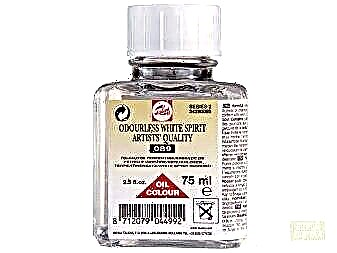

- The choice of thinner depends on the type of paint used. An improperly selected product can completely ruin the structure of the material.
- Before using the substance, you should read the instructions for its use and pay attention to what purpose it is made.
- Thinner has a positive effect on paint consumption. But it is worth being careful that a lot of solvent does not get on the painted surface, as this can ruin it.


Most diluents are designed for the following purposes:
- dilute paints that are highly concentrated or thickened,
- clean the surface of objects or clothing from stains of paint,
- for washing the tool that was used when applying the paint.
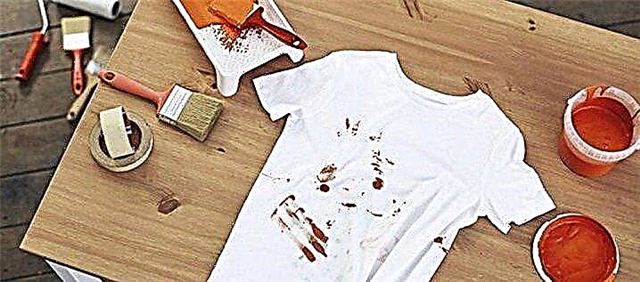
The above possibilities of diluents are basic, but they are used in other industries. For example, acetone is a good option for diluting resins of natural origin, rubber, materials, including fat and wax. White spirit is an ideal solution for all types of paints and varnishes, and is also the best tool surface cleaner and excellent degreaser. To dissolve oil, fat or paraffin, gasoline or kerosene is perfect, sometimes you can use hydrocarbon. For polar synthetic resins, esters must be used. To dilute nitrocellulose or polyester resin, alcohols are a good solution.
To choose the right thinner for the paint, you should pay attention to its composition and choose a thinner with the same components.
When added, it will allow you to give it its original appearance, since it will replace the dried base.
In order for the staining process to be carried out quickly and easily, it is necessary to adhere to several rules.
- Take only clean dishes for use. It should not have specks or residues of previous paint. Before use, the dishes should be rinsed with water and thoroughly wiped dry.


- The most convenient container is cylindrical in shape and with smooth walls. This capacity will allow the most convenient and thoroughly mix the paint with a solvent.
- If it is necessary to dilute paints for which water is suitable, then the solvent should not exceed 10% of the total mass.
- For alkyd enamel, which is used externally, you can add about 3% of the total liquid diluent, and for indoor use - 5%.


Manufacturers and reviews
Russian-made solvents in most cases are toxic, but they do an excellent job of their goals. For example, the known solvents 646 and 647 are designed to dilute nitro enamels. They are distinguished by an unpleasant odor, ease of evaporation, and also worsen the spreadability of paints and varnishes. They should not be used for delicate work. If you pay attention to the bottle with white spirit, then at the bottom you can see the sediment, which indicates the environmental friendliness of this product.
Russian company Novbytkhim acts as a well-known manufacturer of paints and varnishes and household chemicals. Thinners are in great demand, as they are of excellent quality and affordable price. For example, “Solvent No. 1” is a mixture of organic diluents that are suitable for various purposes in construction and industry.
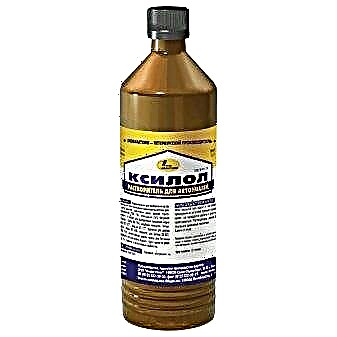
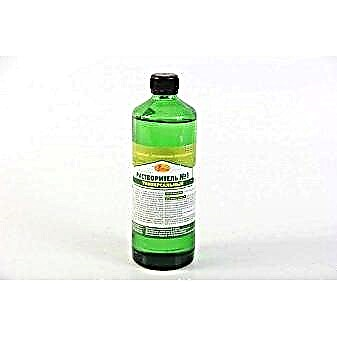
When choosing a solvent manufacturer, it is worth considering for what purpose it is needed. For example, for artwork it is better to purchase products Windsor & Newtonbecause it offers fast-evaporating solvents that dilute the paint to the desired consistency. It is better to refuse technical white spirit.
Among foreign manufacturers in demand products Solvesso.
White spirit from Varsol brand It is highly purified, has a slight smell.
Remedy from the company Exxol It has a low evaporation rate, but perfectly dissolves various paints and varnishes.


Finnish Tikkurila brand offers a wide range of high quality solvents. The company provides safe substances, cares for the environment, manufacturing products in accordance with all international quality standards. She is a leader in the Russian market. Thinner “White Spirit 1050” has a high level of purification, has a slight smell. It is great for diluting oil and alkyd paints and varnishes, and is also an ideal degreaser.
Buyers should pay attention to the technology of manufacturing the solvent and its properties, because they must comply with international standards.


Some customers use solvent as a solvent, since it can also be used both as a degreaser and as an insecticide. It has excellent properties and is sold at an affordable price that customers like. The solvent is suitable for removing varnish, paint, oil, rubber, oligomers and other paints and varnishes from the surface.
Today there are many positive reviews about solvents of both foreign and domestic production. All funds do an excellent job with the goals for which they are intended. If we talk about negative reviews, it is worth noting that many diluents have an unpleasant pungent odor, and are also toxic to the human body. It is advisable to work with solvents outdoors or, if this is not possible, it is mandatory with the window open and in the respirator.
See the next video for the difference between solvents.
What is a solvent and what is its purpose
A solvent is a rapidly evaporating liquid chemical substance or a mixture of several substances of an organic nature, with the ability to dissolve viscous organic substances, thus forming a homogeneous mixture.
Basically, the solvent is intended for coatings, namely, to bring them to the required consistency before use. Some dyes cannot be used without a solvent, for example, having a high concentration and stored in a special container.

A quality solvent, based on its intended use, must meet the following requirements:
- easy to mix with paint until smooth,
- after applying the dye or varnish, the solvent should quickly evaporate,
- when mixed with dye concentrate, the solvent should not begin to react with them,
- the properties of the solvent should not change in contact with water.
In a nutshell, the purpose of the solvent can be described as follows: ensuring the convenience of applying the dye to the surface and further rapid and imperceptible disappearance. They are also used before starting work on painting, degreasing work surfaces, as well as at their completion, cleaning the tool.
Each item in the range of coatings requires the use of a certain type of solvent. It is necessary to observe the compliance of the solvent with the type of paint in order to achieve the formation of a homogeneous substance that will not decompose into its constituent parts, and will make it possible to distribute it on the required area.
Types of Solvents
Solvents are divided into two types:
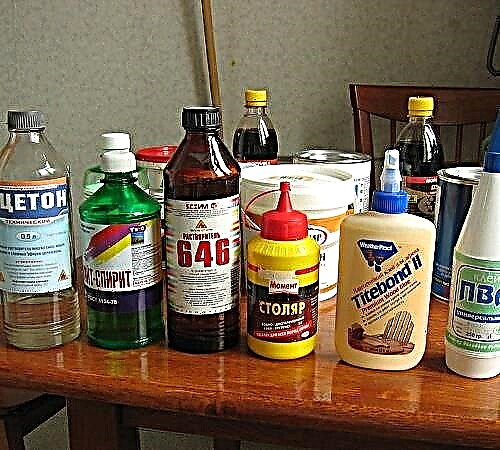
Organic solvents are the most popular, compared with inorganic ones, and according to their physical characteristics, there are the following types:
- hardly volatile, for example turpentine. They are applicable to enamels and varnishes,
- medium volatile, for example kerosene. Most often they are used for oil and acrylic dyes,
- volatile, for example gasoline, white spirit, solvent. They are used for enamels, varnishes, acrylic and oil dyes. Interacting with this group of solvents, you must be extremely careful and be careful because volatile substances are extremely explosive.
Most often they are mobile liquid substances, with a strong odor inherent to them, which is one of the main disadvantages.
The list of inorganic solvents includes:
- water,
- liquid ammonia,
- sulfuric, phosphoric and other salts.
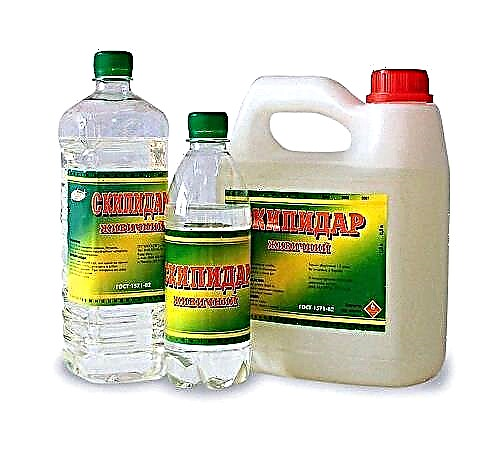
Organic solvents, in contrast to inorganic ones, have a number of serious disadvantages, including a stable odor, unrelenting for quite some time, and flammable toxic fumes, which can also lead to serious poisoning.
But, unfortunately, water-soluble dyes, more in demand abroad, are not in great demand in our country due to loss of quality when stored in the harsh Russian climate.
Overview of the most commonly used solvents in our country, their properties
Organic solvents, despite their not at all safe properties, are widely used in Russia, which cannot be said about their inorganic counterparts. Solvents are divided into three groups:
Below we consider the features and properties of the most common of them. Hydrocarbon solvents include:
- White Spirit is a colorless, oily liquid. It is extremely flammable and has a smell similar to kerosene. Its solvent indicators are not too high, but, in spite of everything, white spirit is still in demand due to the relative cheapness and non-toxicity.
- Petroleum benzene. Colorless liquid that evaporates quickly and is not water soluble. It also has a strong odor, as well as all substances of the organic group. Petroleum benzene is compatible with hydrocarbon compounds. Emits toxic, flammable vapors; in contact with air it becomes explosive.
- Turpentine. It is subdivided into gum and pneumatic. Gum tree is the best. It is a pale yellow, sharply smelling liquid used for breeding putties and oil paints.
- Petrol. The product of oil refining, has flammable properties, easily evaporates. Upon reaching a certain amount of vapor in the air can detonate.

Alcohol solvents include the following:
- Ethanol. It is liquid, has no color, but has a recognizable odor. It should not contain various foreign particles. Its pairs are capable of causing severe poisoning, provided that a large number of them enter the respiratory tract. Not only does it ignite easily when in contact with fire or a spark, but it can catch fire simply when exposed to high temperatures.
- Butyl alcohol. It is used as a diluent for nitrocellulose varnishes. The coating gains shine, becomes smoother, and also becomes less prone to whitening.
- Methyl alcohol (methanol). A clear, liquid substance, usually containing an admixture of esters and acetone. It is extremely toxic.
- Ethylene glycol. A clear, odorless, viscous liquid. Forms a homogeneous compound with water. It evaporates for a long time, which makes it indispensable when working with nitro-varnishes, the coating of which is shiny, smooth, and easy to polish.
Esters are represented by the following group of solvents:
- Methyl acetate. Quickly evaporating, liquid, mobile substance with fire hazardous and toxic properties. Boils at a temperature of 56-58 degrees.
- Ethyl acetate. Evaporates not so fast, boils at a temperature of 77-82 degrees, has a pleasant smell.
- Butyl acetate.Liquid, has a yellowish tint, evaporates for a long time and therefore is used if it is necessary to increase the drying time of the coating.
- Amyl acetate. Transparent, liquid, has a pleasant smell, evaporates slowly. Butyl acetate is also used to slow drying.
- Acetone. It has a characteristic and very unpleasant odor, extremely volatile and fire hazard.
- Mixtures of solvents. To dilute concentrated nitro-lacquers to the desired degree of viscosity, mixtures of solvents from the ester group are used. Moreover, the qualitative properties of the coating directly depends on the elements of the composition. For example, if it contains the largest amount of rapidly evaporating solvents, the coating may become cloudy, but if you make a mixture of substances that slow down the drying time, the coating will appear shiny, smooth, unclouded.
Number Solvents Overview
There are so many solvents that in order to distinguish them, some of them have been assigned numbers that make it possible to navigate in the names and make choices. Consider the most common of them:
- Solvent 4 (P-4) was widely used. In fact, it is a mixture of acetone and toluene. P-4 is mainly used for alkyd varnishes and paints, as well as enamels based on chlorinated polymers. The components present in the solvent are selected so as to have a positive effect on the consistency and coating formation of film-forming substances.
If necessary, it can also be used to degrease the surface before coating, but if it is possible it is better to take another solvent because P-4 is extremely volatile.

It is flammable, when working with it, you must be careful and use personal protective equipment.
- Even more popular is solvent 646, indispensable both in everyday life and in industry. It is applicable both for dissolution and as a degreaser, and is used in many fields, including in auto repair shops. Solvent 646 has remarkable quality characteristics. It includes a whole list of such components, due to which it becomes multifunctional, can dissolve many different chemical compounds.
Solvent 646 has a yellowish tint and pungent odor, evaporates quickly. It contains aromatic hydrocarbons, ketones, alcohols, ethers. In the process of using it, you need to be extremely careful since due to its high activity, it is easy to spoil previous layers of the dye. Sometimes, due to this property, solvent 646 is even replaced with weaker ones.
Without it, it is impossible to manufacture and use many names of paints and varnishes. Solvent 646 is either used during the production of this product, or diluted to the desired consistency before use. It is also indispensable for breeding some putties.
The paint, diluted with the 646th solvent, becomes shiny and smooth upon drying. The enamel and varnish coatings in which it was used, when applied easily and quickly set, forming a film. When solvent 646 evaporates, the odor disappears.
Another advantage due to which consumers liked this solvent is the price, which for all its positive characteristics is quite low, as well as the availability in the public domain - you can buy 646 in every building supermarket.
- Solvent 2 (PC-2) also has good properties. It is a clear liquid with a pale yellow tint. It evaporates quickly. It contains xylene and white spirit. They dissolve oil varnishes, bitumen paints, pentaphthalic enamels. Emits extremely toxic fumes. When working with RS-2, it is always necessary to protect the skin and respiratory tract and eyes. Also, couples adversely affect the nervous system, internal organs, blood and bone marrow, entering the body not only through the respiratory tract, but also through the skin.
In addition to the internal effect, the substance can also have an external effect, for example, invoking a rash with prolonged contact.
The substance is flammable, with the accumulation of vapors in the air, an explosion can occur.
Solvent areas
As noted above, a paint solvent is necessary for the following work:
- dilution of thickened or highly concentrated enamel and paint materials,
- cleaning items or clothing with stained paint,
- cleaning the tool used when applying coatings.
Solvents are used in many areas. For each species, it is different. For example, acetone is successfully used in the synthesis of polycarbonates, epoxies and polyurethanes. Oils, natural resins, polyacrylates, chlorinated rubber, as well as fats, waxes, and rubber are dissolved with its help.
White spirit is applicable to any paints and varnishes. Suitable for oil paints, varnishes, enamels, primers, automotive mastics. They degrease surfaces, clean the tool.

Kerosene, gasoline and other hydrocarbons are used to dissolve fats, oils, paraffin, waxes.
Solvents belonging to the group of esters, for example ethyl acetate, butyl acetate, dissolve polar synthetic resins, cerrizin.
Solvents from the group of alcohols, ethyl, butyl, methyl and others, are used for the manufacture of varnishes, as well as for the dissolution of polyester resins and nitrocellulose.
Solvent Handling
Almost all organic solvents have an effect of varying degrees of severity on human health, depending on the species. In order not to suffer from toxic fumes when working with them, it is necessary to strictly observe safety precautions:
- use personal protective equipment during work, such as gloves, a respirator, goggles, etc.,
- if a substance gets on the skin, wash it off immediately, until it has time to act or has a minimal effect,
- to provide access to the premises of a sufficient amount of fresh air,

- it is necessary to control the temperature in the room, as some solvents become explosive in contact with warm air,
- the combustibility and flammability of these substances should also be taken into account, work in the vicinity of an open flame is unacceptable, smoking is also dangerous, or simply the presence of hot objects nearby,
- solvents should be stored in a cool room, in small bottles or cans, which must have labels on them,
- all containers must be corked upward; its lying on its side or downward with a cork is not permissible.
How types of solvents for paints are classified
Solvents for paints are classified by the following features:
1. By structure:
- homogeneous - based on one component or a mixture of homogeneous components (toluene),
- combined - based on several homogeneous solvents in a certain proportion (for example, the composition of solvent R-4 includes toluene, acetone and butyl acetate).
2. By composition:
Organic is a more popular group of substances, which is also divided into types depending on the rate of evaporation:
- Having a low evaporation rate (turpentine). Used to dilute enamels and varnishes.
- Medium volatiles (kerosene). Mostly used for oil and acrylic dyes.
- Compounds that evaporate quickly (gasoline, white spirit, solvent). Scope: enamels, varnishes, acrylic and oil dyes. When using easily volatile compounds, it is necessary to be guided, first of all, by safety regulations, since these substances are characterized by a high level of explosion hazard.
Most of them are liquid substances with a characteristic specific odor (which is also one of the disadvantages).
Inorganic solvents are:
- water,
- liquid ammonia,
- sulfuric, phosphoric salts, etc.
Organic emulsions have obvious disadvantages: a persistent odor that persists for a long period of time, the release of flammable toxic fumes, which can lead to serious poisoning of the body.
Recommended Related Articles:
At the same time, inorganic solvents quickly lose their positive characteristics when stored in Russian climatic conditions, so this type of solvent for paints is more popular abroad.
What types of paint solvents are most popular
As already noted, in our country, organic paint thinners are most often used, even though these are far from safe formulations.
Solvents are divided into the following groups:
We offer a more detailed look at the characteristics of the most commonly used solvents for paint.

Through water often dissolve water-dispersion paints, as well as some types of adhesives. Please note that if a film forms on the surface of the dye as a result of storage, such a solution will no longer be usable.
Among hydrocarbon solvents should include:
- White Spirit. It is a colorless oily composition. It is characterized by high flammability and a specific smell (similar to kerosene).
The solvent properties of white spirit cannot be called outstanding, but, despite this, the composition is quite popular due to its low cost and non-toxicity.
Most often it is used in the chemical industry: in the manufacture of paints, varnishes, enamels, etc. However, this composition is also often used in everyday life and construction. White spirit is diluted with alkyd enamels and varnishes, oil and resin paints, bitumen materials.
In addition, using a solvent it is possible to degrease various surfaces (in particular, before applying the paint), as well as to clean tools and mechanisms from lubrication.

- Petroleum benzene. An emulsion that has no color quickly evaporates and does not dissolve with water. It has a sharp odor characteristic of organic solvents. The composition in question is compatible with hydrocarbon compounds. Petroleum benzene fumes are toxic and flammable. The liquid becomes explosive in contact with air.
- Turpentine. There are two types: gum and pneumatic. If you compare these species, gum turpentine is the best option. It is a pale yellow liquid with a persistent odor, which is used to dilute putties and oil paints.
- Petrol. It is a derivative oil product, characterized by flammable properties, and easily evaporates. When a certain amount of vapor accumulates in the air, an explosion can occur.
Now let's move on to the group alcohol solvents:
- Ethanol. A clear liquid with a characteristic odor. A high concentration of ethyl alcohol vapor in the respiratory tract of a person can lead to severe poisoning. The solvent quickly ignites from a fire or spark, and can also catch fire under the influence of high temperature.
- Butanol. Most often used to dilute nitrocellulose varnishes. Gives the coating a shine, smoothness, protects against the appearance of white spots.
- Methanol. Colorless poisonous liquid, the composition of which contains ethers and acetone.
- Ethylene glycol. A colorless, viscous liquid that is odorless. Forms a homogeneous compound with water. It evaporates long enough, therefore it is often used when working with nitro-varnishes. The surface is shiny, smooth and easy to polish.
Representatives of the group esters are:
- Methyl acetate. A liquid poisonous solvent that evaporates quite quickly and is characterized by high fire hazard. The boiling point of the solution is + 56 ... + 58 ° C.
- Ethyl acetate. It evaporates longer than the previous solvent, it has a pleasant smell. The boiling point of the liquid is + 77 ... + 82 ° C.
- Butyl acetate. The composition is yellowish in color, which evaporates over time. That is why this solvent is used in cases where it is necessary to increase the drying period of the paint material on the surface.
- Amyl acetate. A flowing, colorless composition that is odorless and evaporates slowly. Like the solvent mentioned in the previous paragraph, it is used to increase the drying period.
- Acetone. A volatile, easily moving liquid with a pungent odor. The boiling point of acetone is +56 ° C.
- Mixtures of solvents. In some cases, solvent mixtures from ester discharges are used to obtain a certain viscosity. It is worth noting that the quality of the resulting coating will depend on the composition of the prepared mixture.
So, if the composition of the solvents contains a large concentration of rapidly evaporating liquids, the coating may become cloudy. And if we include substances that slow down the drying time of the coating in the number of its components, the surface will turn out to be shiny, smooth, and transparent.
Number types of solvents for paints
Solvent 646. Using the universal solvent 646 allows nitro dyes (enamels, paints, varnishes) to be made more fluid. Often also used for diluting epoxy and acrylic varnish materials.
The use of the solvent in question for paints does not imply the use of special protective equipment. Using the compound number 646, you can easily knead / soften the putty.
After diluting the paint with a solvent, the coating is smooth and shiny. Enamels and varnishes quickly set with it, forming a transparent film on the surface. After the solvent evaporates, the smell disappears.

Among the advantages of the solvent for paints 646 can be attributed its low cost, although this composition has enough positive characteristics. Plus, liquid can be bought at most hardware stores.
Solvent 647. The composition of the solvent for paints contains toluene, butyl acetate, ethyl acetate and butanol. This product is often used by services that deal with car painting, since nitro-varnishes and nitro enamels can be diluted with such a solvent.
It is better to choose this composition for work requiring a more careful attitude to the surface being treated, since, in comparison with solvent 646, acetone and ethyl cellosolve are absent among the components.
Solvent 649. This type is made from xylene, ethyl cellosolve and butanol (in a ratio of 5: 3: 2). It is used to improve the viscosity of NTs-132k enamels and GF-570Rk paints.
All types of work using this composition must be carried out in compliance with safety regulations: be sure to protect your hands with gloves! Keep solvent in a tightly closed container away from direct sunlight.
650 solvent. Using it, you can give the desired consistency to NTs-11 enamels (which are intended for tinting areas limited in area with a brush), as well as GF-570Rk paints.
Solvent 650 is obtained by mixing xylene, butyl alcohol and ethyl cellosolve in a percentage ratio of 50:30:20. The composition is quite toxic, so in the working room must necessarily be able to ventilate.
Solvent R-4. Contains a mixture of ketones, esters and aromatic hydrocarbons.
P-4 can be used for the dilution of paints and varnishes based on vinyl acetate, vinylidene chloride or its copolymers, perchlorovinyl paints.
In some cases, this type of solvent for paints is used to degrease the surface (however, this should only be done in extreme cases, since P-4 is extremely volatile).
The R-4 solvent is flammable, therefore, when working with it, you need to be especially careful and use the necessary protective equipment.
When to use this or that type of paint thinner

The use of one or another type of solvent for paint is advisable in the following cases:
- to give a working consistency to enamels and paints,
- to remove traces of paint from objects or clothing,
- in order to clean the tools that were used when applying paint to the surface.
Solvents find their application in many fields. It all depends on the species. So, acetone is widely used in the synthesis of polycarbonates and epoxies. In addition, it allows you to dissolve oils, chlorinated rubber, fats, rubber, etc.
White spirit can be used when working with most paints and varnishes: oil paints, varnishes, enamels, primers, automotive mastics. The solvent is also effective for degreasing surfaces and for cleaning tools.
Kerosene, gasoline and other hydrocarbons are excellent solvents for fats, oils, paraffin, waxes.
Using solvents from the group of esters, for example, ethyl acetate, butyl acetate, you can dissolve polar synthetic resins, cerrizin.
Alcohol solvents (ethyl, butyl, methyl, etc.) are used in the manufacture of varnish materials, as well as for the dissolution of polyester resins and nitrocellulose.
7 rules for the safe use of various types of solvents for paints
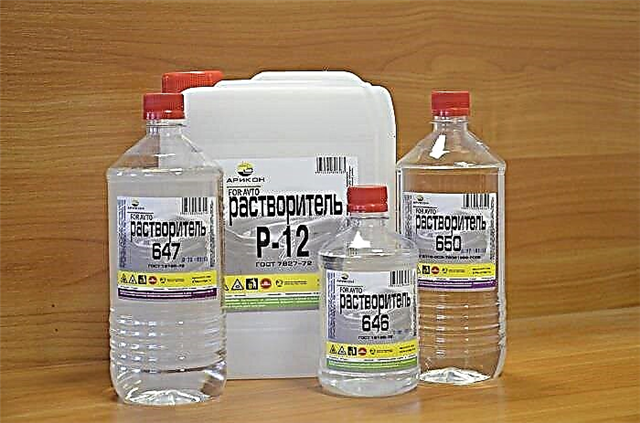
Many types of solvents for paints are characterized by rapid volatility and chemical activity; therefore, when using them, all safety precautions should be observed:
- Any use of solvents should be accompanied by the use of personal protective equipment - gloves, a respirator and special glasses.
- It is best to work with solvents on the street, and in the absence of such an opportunity, you should ensure the proper level of ventilation in the room.
- If the composition got on an open area of the skin, then it must be washed off with running water. Please note that an increasing proportion of solvents for paints are combustible (this excludes smoking during work).
- Depending on the type of solvent, you need to monitor the temperature of the air in the working room: there are such compounds that, when in contact with air of a certain temperature, can detonate.
- All solvents are flammable, therefore, work near open flame sources or hot objects is strictly prohibited.
- Solvents should be stored in a cool room, in small containers with tight-fitting lids, on which appropriate notes should be made with the name of the liquid and the date it was opened.
- Tanks with solvents should be placed with their lids up (do not lie on their sides and do not stand upside down).
Where to buy high-quality and safe paints for furniture
Raduga JSC has been operating since 1991 (formerly Tsentrmebelkomplekt, Decor-1). The company was organized to supply raw materials to enterprises that are part of Centromebel CJSC.

Today, the company's permanent business partners are not only Russian manufacturers, but also leading companies in Germany, Austria, France, Italy, Switzerland, Finland, Poland, Sweden. Our office is located in the center of Moscow, as well as our own warehouse complex with an exhibition hall of 200 m².
In our warehouses located in the near Moscow region, there is always a large selection of raw materials, materials and components for the production of furniture and joinery. In the assortment of more than 300 types of varnishes and 400 types of dyes, emphasis is placed on the sale of varnishes and dyes with a dry residue.
At the request of customers, our team for one or two days produces polyurethane enamels in almost all colors. We offer adhesives from five leading manufacturers in Europe, natural veneer and lumber - more than 60 types of ordinary, exotic and exclusive species. Front and mounting accessories are constantly available - more than 4000 items from manufacturers from Europe: Austria, Poland, Germany, etc.
Every month we process applications from more than 1800 customers. These include both large furniture factories and private entrepreneurs.
Deliveries of goods are carried out throughout Russia. Our company delivers goods for free in Moscow. Products are shipped by road to all regions of Russia.
Our company takes seriously the training of our own specialists. Managers systematically undergo internships in companies engaged in the production of finishing materials in Germany, Italy, Austria, and Finland. The employees of our company provide technical assistance to customers.
We invite you to cooperate on mutually beneficial conditions! We value our customers and try to find an individual approach to each customer.
Appointment
Solvents as substances that change the properties of coatings are used to improve their fluidity and viscosity. The main purpose of their application is to increase the efficiency of work.
And in this sense, they solve the following problems:
- breeding thick coatings to improve their fluidity and speed up the working cycle,
- cleaning contaminants of various surfaces,
- cleaning, disinfection and degreasing of treated surfaces in order to improve adhesion,
- adhesive manufacturing
- the manufacture of impregnating adhesion improving consistencies,
- cleaning workwear and equipment.
Organic solvents are widely used in the manufacture of coatings of a wide range.
They are used in dry cleaners, in everyday life (turpentine, acetone) to remove glue and varnish residues (methyl alcohol, acetone, ethyl acetate), as a component in compositions intended for washing operations, in the perfume industry (ethanol), in chemical synthesis processes and as degreaser.
As a rule, the solvent itself and the consistency it dissolves are to a certain extent similar, that is, there is a polar principle.


Organic solvents in construction and finishing works are used to bring to the required degree of viscosity of various primers, putty consistencies and varnishes. They are used for degreasing tools and product surfaces.
Based on these functions, solvents must satisfy the necessary requirements:
- do not react with paint and varnish and have a high level of evaporation,
- possess non-hygroscopicity (do not change the inherent necessary qualities, reacting with water),
- mixing of reagents should effortlessly result in a uniform consistency,
- the solvent must act on the coatings only at the time of its application to the surface and then evaporate.

Types and characteristics
Compared with inorganic reagents, organic ones are used an order of magnitude more often because of their wider functional properties. The composition of organic reagents are homogeneous and heterogeneous.
Homogeneous 95–100% consist of the main chemical component - base. Sometimes, to reduce the concentration, the reagents can be dissolved in other media, for example, in aqueous. The cost of solvents of this group, as a rule, is less than combined, but they have a narrower spectrum of applicability for interaction with different materials.
Heterogeneous (numbered) - the reagents obtained by the mixing method vary in composition and manufacturing technology. In terms of price and effectiveness, they differ significantly from homogeneous analogues.


Another classification forms the following types of organic reagents for coatings:

the first group - hydrocarbon, include:
They are flammable and do not dissolve in water.
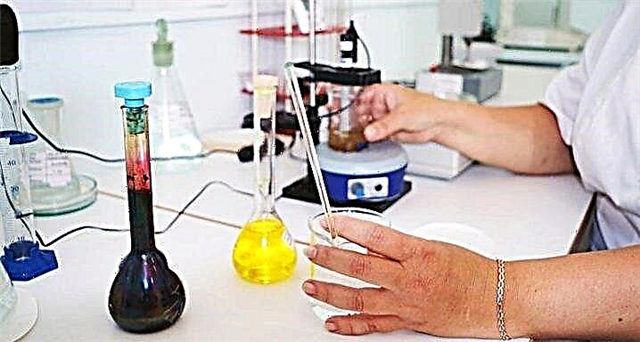
- Turpentine used in two versions: gum and barn. The first is of better quality - without color or slightly giving off yellow substance with a boiling point up to 180 °. The second is somewhat darker and spreads a pungent odor. The composition is widely used in paintwork. Reacting well with ethers, alcohols and chlorine derivatives, it dissolves coatings, accelerating their drying. It is used for the preparation of mastic compounds, as well as for wet grinding.
- White Spirit - a product of oil distillation, is an intermediate product between fractions of gasoline and kerosene. Colorless, volatile, with a boiling point of not more than 165 °. The ability to dissolve coatings is slightly lower than that of turpentine. Used in the wet sanding process.


- Petrol - volatile oil distillation product. Fire hazard, forms explosive mixtures. Due to the high degree of volatility, it is rarely used in furniture decoration.
- Benzene - mobile volatile substance without color. In practice, 90% and 50% formulations are used. Toxic, flammable, formation of explosive mixtures is possible. Rosin, wax, rubber and other substances are perfectly dissolved in it. It is used in the manufacture of varnishes (reduces the density) and as a solvent reagent for nitro varnishes.
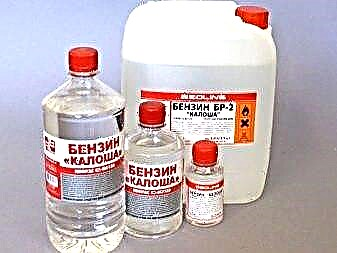

The following group of reagents for paints and varnishes are alcohols, of which ethyl and butyl are most widely used:
- Ethanol - a liquid substance without color, obtained by distillation of sugar fermentation products. In the paint and varnish area is applied with a strength of at least 90 ° (a small degree of strength leads to marriage). It is able to react with some resins, for example, shellac. It is used as a diluent together with reagents for nitro-varnishes.
- Butyl alcohol - an excellent reagent for nitrocellulose varnishes, gives the film a high-quality look, reduces the degree of whitening of the coating.
- Methyl alcohol - a liquid product without color, obtained during the distillation of wood. As a rule, it includes additives of acetone and ethers. In its pure form is called methanol. Well dissolves certain types of resins and oils. In some industries, the use of the product is limited due to its toxicity.
- Ethylene glycol - viscous liquid without color and odor. It mixes well with water. It has a low evaporation rate, which positively affects the film formation and the state of the coating - it acquires an excellent appearance and is easier to polish. The product is used in the manufacture of varnishes, which are based on resins.

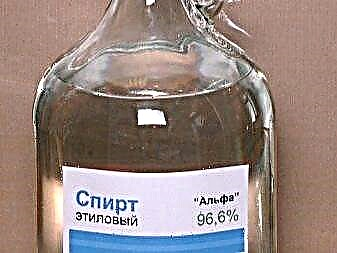
The last group is represented by esters - methyl, ethyl, butyl and others. The products are used mainly as reagents with nitrocellulose and in the manufacture of these mixtures in order to bring the compositions to the degree of viscosity necessary for use.
- Methyl acetate - liquid, low boiling point, poisonous, flammable, with a high degree of volatility (T flash - 13-16 °).
- Ethyl acetate - slightly volatile liquid substance (T boiling point - 78-82 °). In various proportions it is mixed with alcohols, esters, fats and oils. Excellent reagent for resins and wax.
- Butyl acetate - yellowish liquid with low evaporation. It is used as a moderator of drying speed, it is able to prevent whitening of a varnish film.
- Amyl acetate - liquid with a non-intense level of evaporation. An excellent reagent for nitrocellulose, oils and certain types of resins. The scope is similar to butyl acetate. Often used in furniture restoration.
- Acetone - a highly volatile liquid with a pungent odor that perfectly dissolves nitrocellulose. The reagent is fire hazard. In various proportions, it is easily mixed with alcohols, ether compounds and water.
In order to bring coatings to the state necessary for work, mixed reagent compositions are often used, which have a significant effect on the state of the entire coating. With the predominance of low-boiling acetone, methyl / ethyl acetates in the compositions, the lacquer coating becomes cloudy due to the rapid evaporation, and the use of only high-boiling solvents such as butyl acetate or amyl acetate, on the contrary, reduces the drying rate of the coating.
Modern industry supplies ready-made forms that are already matched to the corresponding paintwork brands, for example, P-4, P-5, P-645, 646, 647, 648, 649, 650 and AMP.

Today, there are both universal solvents on sale, for example, the popular 646 product, as well as highly specialized ones:
- For anti-corrosion primers, Solvent 1120 made by Rostex Super is perfect. In this case, the composition is applied quickly and easily, and the surface becomes even and smooth after drying.
- To work with alkyd paintwork materials by spraying, developed solvent 1032, which is also suitable for effective cleaning of tools.
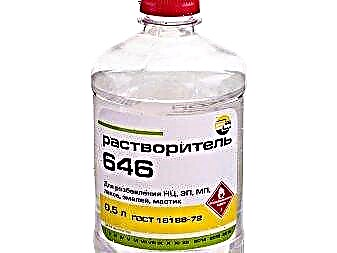

Selection tips
It should be remembered that each type of paintwork requires a specific type of solvent to work. More specifically, for grease, glue, oil, paint, correction fluid, gypsum, drying oil, cement grout, primer, rosin and other coatings, there are specific types of reagents. Therefore, the correct selection of the product is a guarantee of high-quality coating, since it ensures the homogeneity of the mixture, the absence of decay, easy and quick work with it. Knowledge of the technical characteristics of the product helps in its selection.


The specificity of the solvent is its ability to quickly evaporate from the diluent, which gives it the required qualities. Separate solutions have a desiccant quality, reducing drying time. The ability to accelerate the formation of a film in reagents is another function along with the main one (imparting fluidity and lowering viscosity).
The reagent volatility index directly affects the quality of the film formed by coatings. To control the process, it is important to consider that if the reagent evaporates too quickly, the coatings turn white, spots appear on them, the coating structure is deformed, and its properties change. That is why in a number of cases the use of volatile solvents is not recommended.
The probable level of volatility of the reagent can be judged by the boiling point. The smaller it is, the higher this property, and vice versa. When choosing a product, you should especially focus on the external aspects of the reagent and compare them with descriptions on labels or in product cards.

The main evaluation criteria are slight deviations in color, density, the presence of particles and precipitation. It is better not to buy such reagents.
LKM-dissolving reagents are selected by manufacturers based on the speed and uniformity of the evaporation process. The cheap constituents in them disrupt these processes.
For example, acetone in reagent 646 is excessively volatile, which prevents the optimal drying process of the film. Due to the extremely rapid evaporation, the formation of a surface film is too rapid, which, in turn, prevents the exit of the volatile constituents from the deep layers. The result is “boiling”, loss of shine, poor film quality. Alcohols, abundantly available in domestic reagents, act negatively on the film formation of acrylic coatings. The water in the alcohols disrupts the polymerization of these materials, leading to the friability of the resulting polymer film.


In order to clearly understand which particular reagent is suitable for a specific paintwork, it is important to carefully study the description and the table of correspondence.
When choosing and working with reagents, it is necessary to take into account such a feature of the product as the level of toxicity.
In this context, 3 indicators are distinguished:
- The maximum permissible concentration in the work zone (MPC) is an indicator reflecting the permissible degree of saturation with toxins.
- Semi-lethal dose rate.For example, “LD50” means that when the body receives a product of a certain concentration (mg), the probability of a death is 50%.
- The average concentration of toxic vapor emitted by the reagent until the final drying out (determined by a special table).

Safety precautions
Often, indicators of fire and explosion hazard of reagents are not noted in the descriptions. Therefore, they just need to know:
- Reagent flash point shows its minimum level at which it can release a volume of toxins sufficient to cause sustained fire.
- Reagent auto-ignition temperature - the lowest temperature level when vapors can ignite without the participation of an external source of ignition.
- Reagent flash point - the lowest temperature level when vapors can ignite from a spark (for individual reagents this temperature can be less than zero degrees).

Organic reagents are characterized by a significant level of toxicity, adversely affecting human health.
That is why in working with them you must adhere to special rules:
- the presence of effective ventilation (supply and exhaust and exchange) at the workplace,
- the use of a respirator and protective clothing,
- the exclusion of fire or sparks in the room,
- storage of reagents in special basements or warehouses. On the shelves, they should be placed with the cork up. Direct sunlight should not be allowed.
Almost all organic reagents are active, and some (for example, ketones, amines and others), when they are high in the room, lead to acute poisoning, while others cause allergies, dermatitis and other complications.
See the next video for the difference between diluents and solvents.



